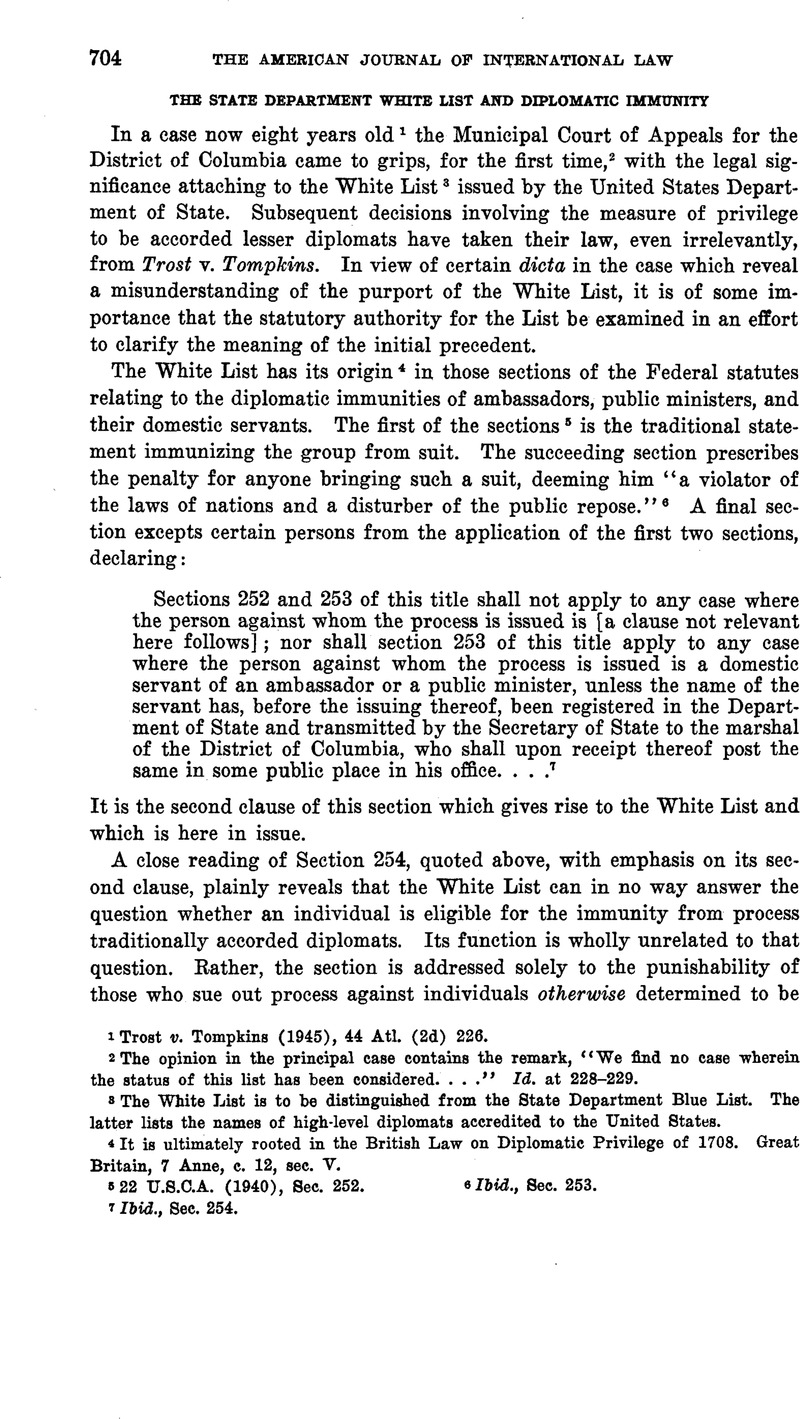No CrossRef data available.
Article contents
The State Department White List and Diplomatic Immunity
Published online by Cambridge University Press: 20 April 2017
Abstract

- Type
- Notes and Comments
- Information
- Copyright
- Copyright © American Society of International Law 1953
References
1 Trost v. Tompkins (1945), 44 Atl. (2d) 226.
2 The opinion in the principal case contains the remark, “We find no case wherein the status of this list has been considered. …”Id. at 228–229.
3 The White List is to be distinguished from the State Department Blue List. The latter lists the names of high-level diplomats accredited to the United States.
4 It is ultimately rooted in the British Law on Diplomatic Privilege of 1708. Great Britain, 7 Anne, c. 12, sec. V.
5 22 U.S.C.A. (1940), Sec. 252.
6 Ibid., Sec. 253.
7 Ibid., Sec. 254.
8 Trost v. Tompkins, supra.
9 Preuss, , “Immunity of Officers and Employees of the United Nations for Official Acts: The Banallo Case,” this Journal , Vol. 41 (1947), pp. 555 Google Scholar, 562, note 26.
10 174 F. (2d) 496 (1948).
11 Id. at pp. 497–498.
12 Id. at p. 498.
13 88 Atl. (2d) 312 (1952).
14 Id. at p. 316.
15 Cited supra, note 4.
16 Hemeleers-Shenley v. The Amazone, Re The Amazone, [1940] 1 All E.R. 269, 273, C.A.
17 Id. at pp. 273–274.


